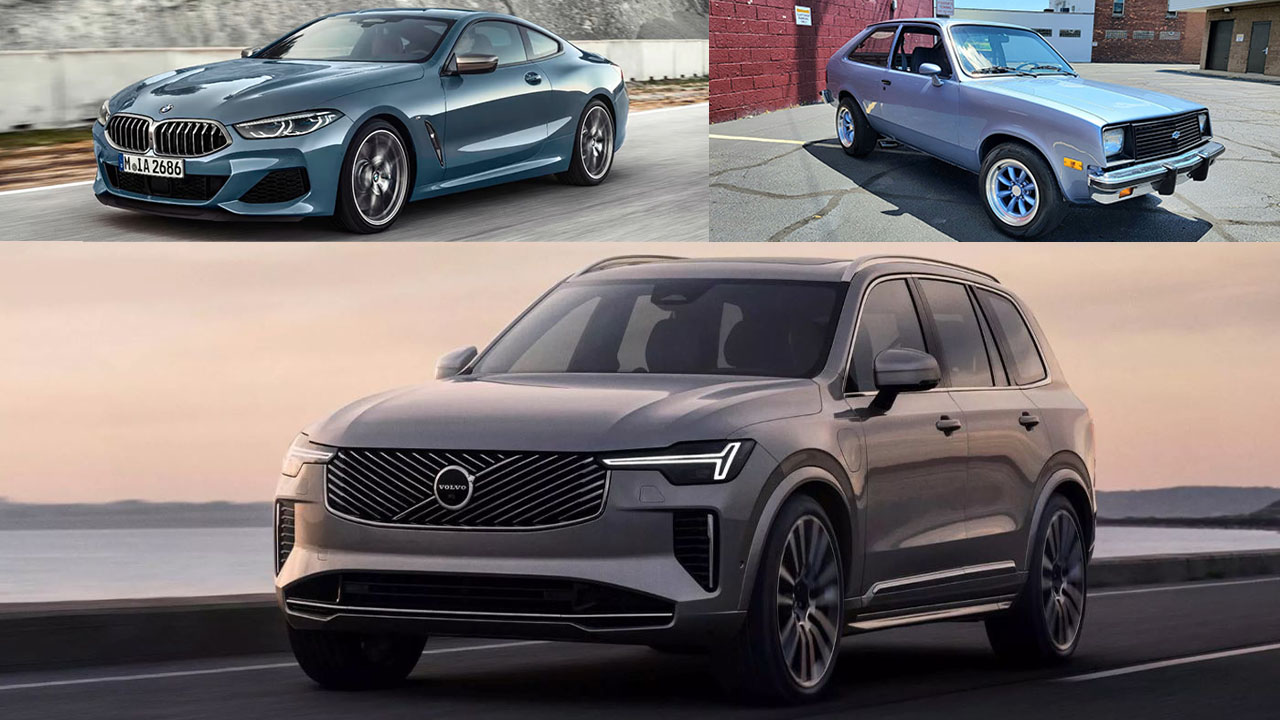As the leaves transform into shades of gold and the wind begins to hint at the arrival of frost, a recurring question emerges among drivers: which SUV stands out as the ultimate choice for winter conditions?
Worry not, brave adventurers, for this guide will reveal the top 5 frontrunners equipped to master the 2021 snowy terrain, guaranteeing your journeys carry on even as temperatures begin to plummet.
As the winter months bring harsh conditions to the roads, it’s essential to have a vehicle that’s up for the challenge. While sedans and sports cars may struggle in icy, snow-covered terrain, SUVs have earned their reputation as the ultimate winter warriors.
With their high ground clearance, all-wheel-drive capabilities, and rugged durability, these vehicles are built to handle whatever the cold weather throws their way.
Winter Warriors SUVs
Whether you’re going through snowdrifts, tackling icy roads, or simply seeking a safe and comfortable ride through the winter season, a capable SUV can make all the difference.
In this article, we’ll explore some of the best winter-ready SUVs that are sure to keep you confident and secure no matter how tough the winter weather gets.
1. Subaru Outback
The Outback has earned its reputation as a winter warrior, and it’s easy to see why. Its renowned Symmetrical All-Wheel Drive system ensures balanced power distribution, delivering exceptional traction on snowy and icy roads.
Boasting 8.7 inches of ground clearance along with impressive approach and departure angles, the Outback navigates through snowdrifts with ease.
Additionally, its roomy cargo space and heated seats make it ideal for transporting winter equipment and staying cozy during cold-weather drives.
The Subaru Outback is the automotive equivalent of a versatile mid-weight trail-hiking boot: practical, comfortable, and capable enough to handle moderately challenging terrain when needed.
While many crossovers share similar attributes, the Outback stands out as a station wagon first and foremost, giving it a unique, friendly, and relaxed personality that has resonated with drivers for over thirty years.
Its wagon architecture ensures a smooth, car-like ride, while also offering generous cargo space and room for up to five passengers.
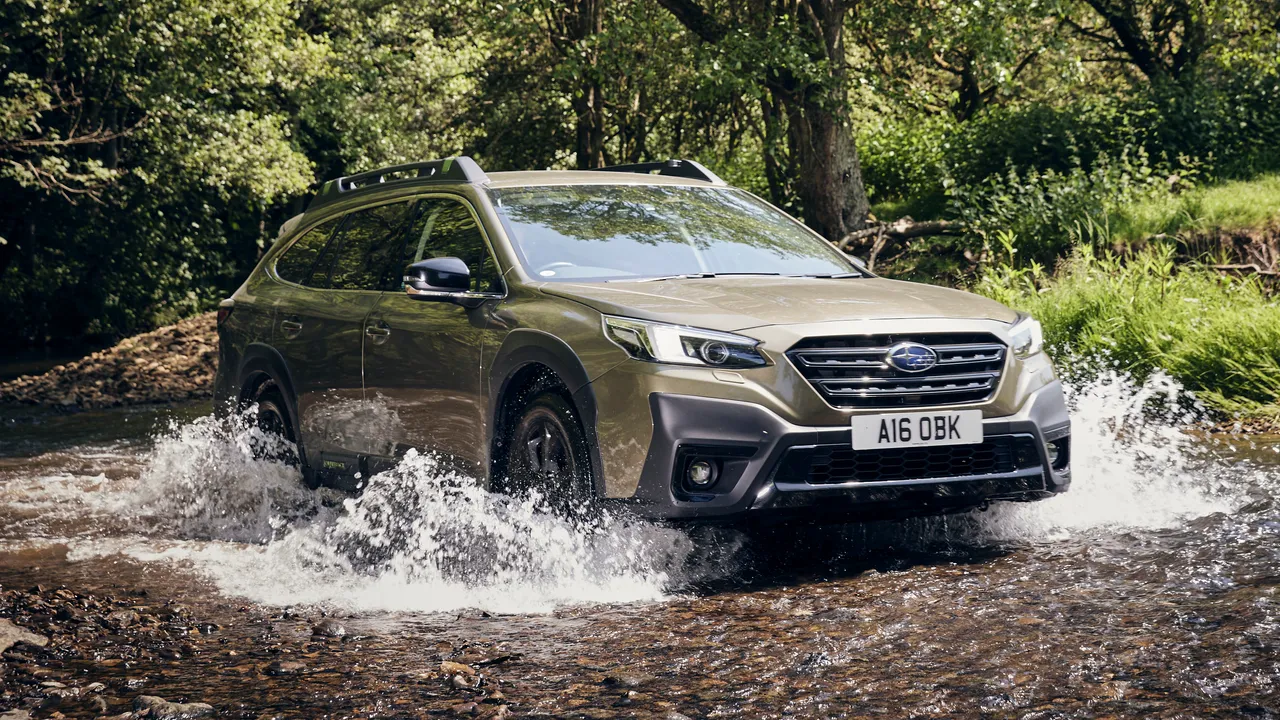
The base model comes with a 182-horsepower four-cylinder engine paired with a continuously variable automatic transmission (CVT) and standard all-wheel drive.
For those seeking a bit more power, Subaru offers a 260-horsepower turbocharged four-cylinder engine. Inside, the Outback features a well-organized layout with above-average upholstery quality, and higher trims offer a level of refinement that approaches genuine luxury.
However, the Outback never loses its laid-back, approachable character, which might not appeal to those accustomed to the high-end luxury of brands like Audi or Volvo.
For these buyers, alternatives such as the Audi A4 Allroad or the Volvo V60 Cross Country might be worth considering. Nevertheless, the Outback remains a well-rounded, reliable option with a devoted fanbase.
2. Toyota RAV4 Hybrid
For adventurers who seek winter excitement while staying environmentally mindful, the RAV4 Hybrid is a true game-changer.
Equipped with a standard AWD system and a hybrid powertrain, it offers outstanding traction and impressive fuel economy, making it a cost-effective choice for winter driving.
Its roomy interior and smooth ride ensure passenger comfort, while features like available heated seats and a panoramic sunroof bring an added touch of seasonal luxury. SUVs are often labeled as gas-guzzling planet-polluters, but the Toyota RAV4 challenges this perception.
In fact, it emits less CO2 than some small cars, making it one of the most fuel-efficient family SUVs available. This is thanks to its petrol plug-in hybrid powertrain, as the traditional hybrid version has been discontinued.
The RAV4 is positioned between the Toyota C-HR and the more rugged Toyota Land Cruiser in Toyota’s lineup, and it shares a close relationship with the Suzuki Across. Despite its size, it doesn’t offer a seven-seater configuration, which is an option with some of its rivals.
When it comes to competition, the RAV4 faces several strong contenders, including the Ford Kuga, Hyundai Tucson, Kia Sportage, and Volkswagen Tiguan, along with newer models such as the BYD Seal U, Jaecoo 7, and MG HS.
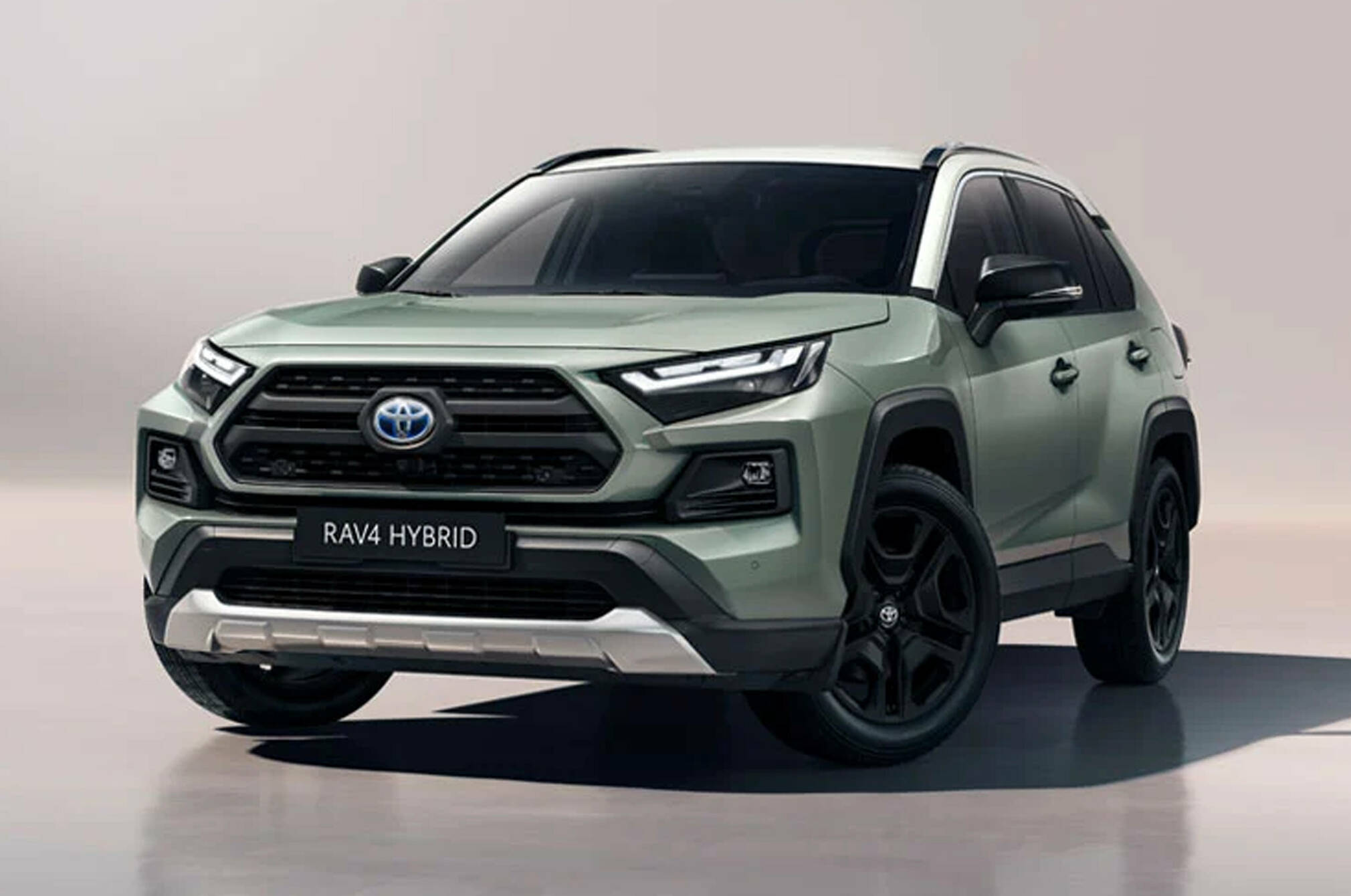
But how does the RAV4 perform in real-world conditions, and does it stand out in other key areas? The Toyota RAV4’s plug-in hybrid engine makes it an appealing option for both company car fleets and private buyers.
Its strong resale value, impressive fuel economy, and renowned reliability are key selling points. For those looking to buy, the Design trim offers the best value, as it comes equipped with all the essential features.
In terms of strengths, the RAV4 excels in fuel efficiency, holds its value well over time, and boasts a reputation for reliability.
However, it does have some drawbacks, including a subpar infotainment system and a less engaging driving experience compared to some rivals. Additionally, the lack of a seven-seat option may limit its appeal for larger families.
When it comes to driving, the RAV4 offers punchy acceleration and is easy to maneuver in urban environments. However, it doesn’t handle corners as well as some competitors, and road noise is more noticeable. The petrol engine can also be louder than expected at times.
Under the hood, the Toyota RAV4 is equipped with a 2.5-liter petrol engine and two electric motors, delivering a combined 302bhp.
This allows the RAV4 to accelerate from 0-62mph in just 6.0 seconds, which is quicker than plug-in hybrid versions of the MG HS and Range Rover Evoque, and faster than rivals like the Ford Kuga PHEV and Honda CR-V PHEV.
On electric power alone, the RAV4 can reach motorway speeds, with a real-world range of more than 30 miles on a full charge.
Toyota claims the RAV4 can achieve up to 46 miles on electric power, surpassing the Kuga and Evoque PHEVs. However, the MG HS and VW Tiguan PHEVs offer an even longer range, with up to 70 miles possible on a full charge.
Also Read: 5 Cars With the Best Factory Paint and 5 That Peel Fast
3. Volvo XC90
When it comes to luxury and winter driving, there’s no need to choose between the two. The XC90’s advanced AWD system with torque vectoring provides a smooth and stable ride, even on the slipperiest of roads.
Its elevated ground clearance effortlessly handles snowdrifts, while features like heated seats, a panoramic sunroof, and a premium sound system ensure an oasis of comfort.
Whether you’re navigating urban streets or setting out on a snowy adventure, the XC90 transforms winter driving into a first-class experience.
Like a well-tailored suit, cars can also benefit from a bit of fresh refinement over time. A prime example of this is the 2025 Volvo XC90. Although it’s been overshadowed at the top of Volvo’s lineup by the new all-electric EX90, the three-row SUV has found itself unexpectedly relevant again.
This resurgence comes after Volvo adjusted its timeline for a complete transition to EV-only models. While the move to full electrification is still on Volvo’s agenda, the automaker acknowledges that the shift may not happen as quickly as initially anticipated.
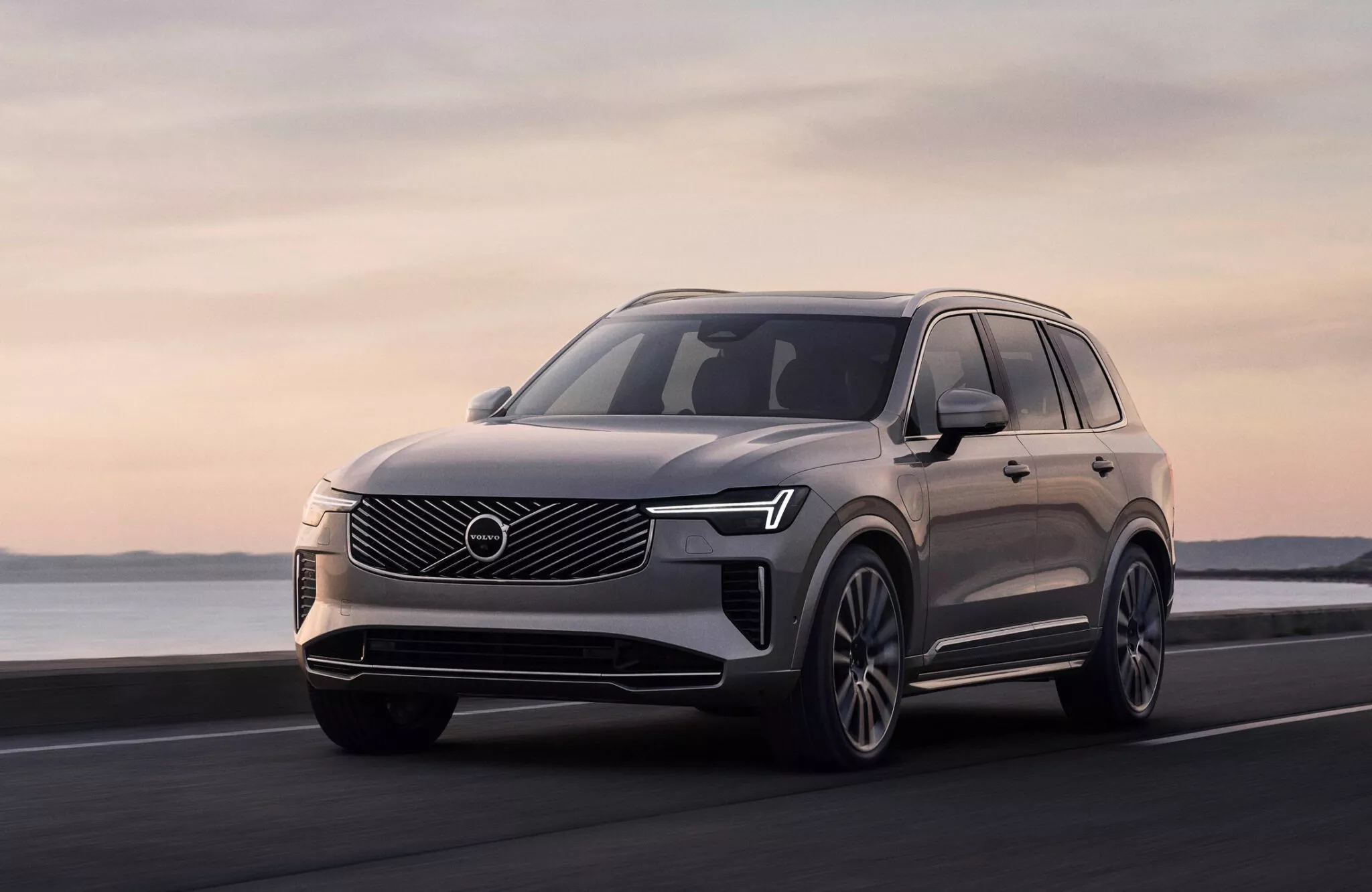
As a result, the XC90 and EX90 now coexist in harmony: both are similarly sized, but the EX90 caters to high-end early adopters, while the XC90 recognizes that not all buyers are ready to make the jump to an electric vehicle just yet.
Volvo’s decision to keep the XC90 available in both mild hybrid and plug-in hybrid versions seems like a smart one.
Not only does this offer a more affordable entry point, with the 2025 XC90 starting at $58,450 compared to the $79,995 starting price of the 2025 EX90 (both excluding destination fees and applicable incentives), but it also allows potential buyers to dip their toes into the world of electrification without fully committing.
Rather than letting the XC90 coast along unchanged, Volvo has refreshed it for the 2025 model year with a series of thoughtful updates.
These changes have addressed most of the previous criticisms of the SUV, and combined with a subtle design update, the result is a vehicle that, in some ways, is more appealing than its electric sibling.
For a design that was first introduced in 2015, the XC90 has aged exceptionally well. This marks the second facelift for the second-generation SUV, with the updates smoothing out some of the sharper edges and introducing a new grille design that evokes the minimalist, Scandinavian aesthetic that Volvo is known for.
While the changes aren’t drastic compared to last year’s model, they were unnecessary to make the XC90 more attractive.
The base trim comes with 20-inch alloy wheels wrapped in all-season tires, with 21-inch wheels available for an additional $800. Larger wheels are standard on higher trims.
Volvo also earns praise for its color palette, offering the usual whites, blacks, and silvers, along with a pleasant blue and the near-purple Mulberry Red, both available as no-cost options.
4. Jeep Wrangler
For those who truly embrace winter adventures, the Wrangler is a name that requires no explanation. Its iconic AWD system, Command-Trac with low-range gearing, and generous ground clearance make it an unstoppable force on snowy terrain.
Need a removable roof and doors? It’s got that covered. Looking for optional locking differentials to tackle extreme landscapes? No problem. The Wrangler is the ultimate playground for winter enthusiasts, though it’s important to be mindful of its fuel consumption.
The 2025 Jeep Wrangler continues to be one of the most iconic vehicles on the road, retaining its rugged appeal and exceptional off-road capabilities. While the Wrangler has remained true to its adventurous spirit over the years, it now features modern in-car technology, making it more user-friendly than ever before.
Available in two body styles, with multiple powertrain options including a plug-in hybrid, and a variety of customization choices, the Wrangler is tailored to fit any adventure. Despite no major changes for the 2025 model, the Wrangler retains its reputation as a vehicle that can handle any terrain with ease.
The Wrangler’s affordability is a major draw, with the Sport trim providing a relatively low cost of ownership.
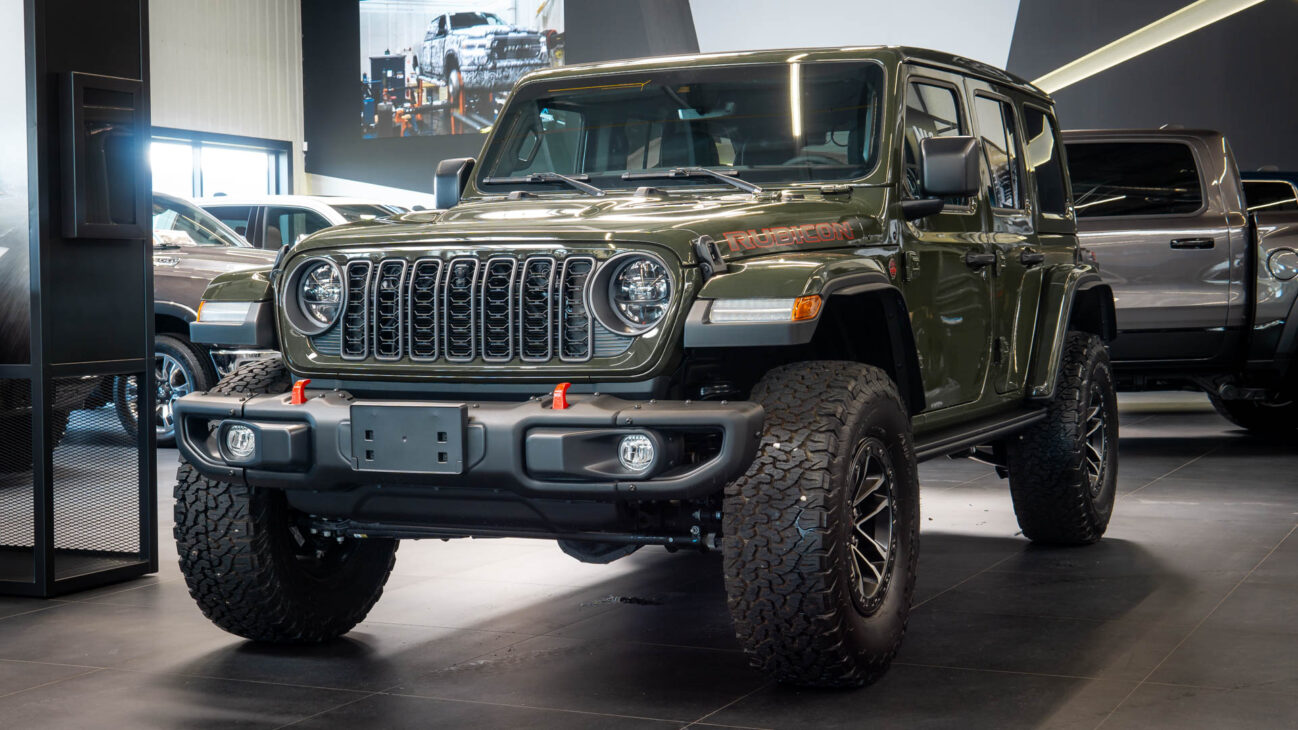
According to cost-to-drive estimates for the 2025 Wrangler Sport 2dr SUV 4WD (3.6L 6cyl 6M), driving 15,000 miles per year with a mix of city and highway driving costs around $199 per month, which is slightly higher than the average compact SUV’s monthly costs of $161.
Its off-road capabilities are a standout feature, with the Wrangler being known for its unrelenting power off the beaten path.
Even in basic trim levels, the Wrangler performs admirably off-road, and with additional packages for beefed-up axles, upgraded shocks, and locking differentials, it becomes a true off-road powerhouse.
The design of the Wrangler, from its low and narrow hood to its well-thought-out interior controls, has been fine-tuned over the years to make it an ideal choice for those who love off-roading.
When it comes to competitors, the Ford Bronco is the closest rival, offering similar ruggedness and better on-road performance. While the Bronco provides an enjoyable driving experience on pavement, the Wrangler’s off-road capabilities still put it ahead in that department.
The Toyota 4Runner also competes, especially when equipped with higher-end off-road packages, though it lacks the Wrangler’s iconic removable roof. Throughout its generations, the Wrangler has consistently been a top choice for off-road enthusiasts, and the 2025 model is no different.
We had the opportunity to test a 2018 Wrangler Unlimited over a two-year period, driving it for 50,000 miles both off-road and on the highway.
While this was an older version, the 2025 Wrangler shares the same generation, and many of the observations and insights gathered during that time are still relevant.
Despite some minor quirks, such as slow steering and more road noise at highway speeds, the Wrangler’s off-road prowess, customization options, and overall rugged nature continue to make it a top choice for those seeking adventure.
5. Hyundai Palisade
The Hyundai Palisade is a roomy SUV that provides plenty of space for both passengers and cargo, making it the perfect choice for family winter vacations.
Its standard AWD system and smooth ride ensure that long trips are easy and enjoyable, while additional features like heated seats and a panoramic sunroof enhance the comfort during colder months.
With its affordable price, the Palisade delivers remarkable value, offering excellent winter-ready performance at a competitive cost.
The 2026 Hyundai Palisade SUV, revealed at the 2025 New York Auto Show, is a prime example of a product that delivers more without raising the cost—think of it like your favorite product in a new, eye-catching package that screams “Now With More!”
While Hyundai didn’t provide an exact figure for the increase, the new Palisade brings more space, better efficiency, enhanced off-road capabilities, and more luxury features. This update feels like inflation working in the consumer’s favor for once.
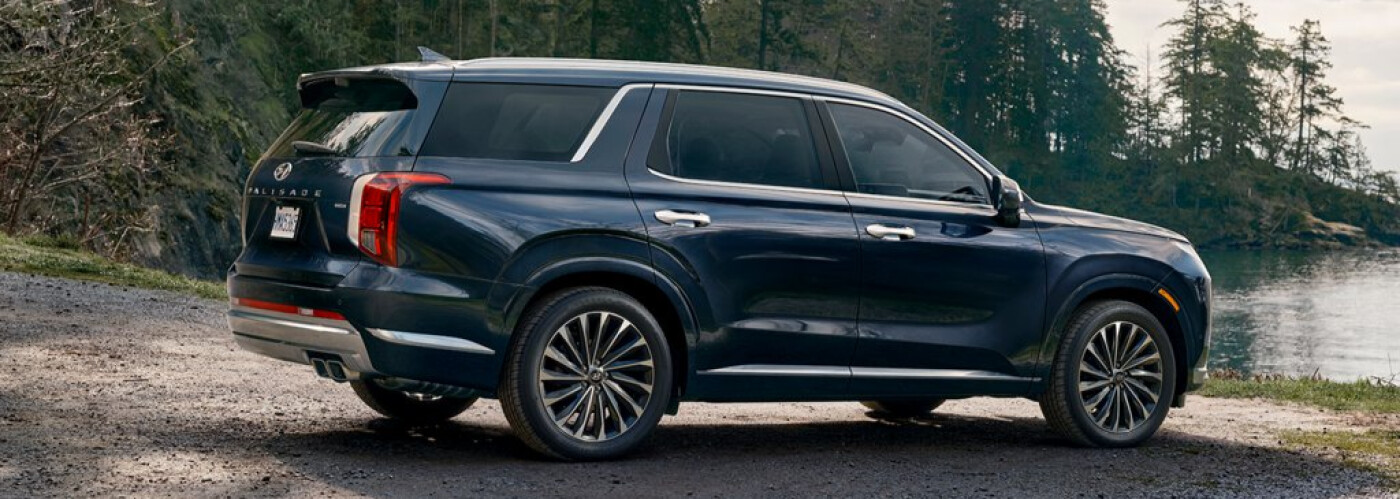
Although the 2026 Palisade retains the same platform as its predecessor, Hyundai has extended its wheelbase by 2.7 inches and increased the overall length by 2.5 inches, while adding a slight increase in height (0.6 inches) and width (0.2 inches).
The front overhang has also been reduced by 1.6 inches, which shifts the vehicle’s proportions slightly rearward. The new Palisade’s design is familiar, yet modern, with a rear fender bulge that evokes the look of a Range Rover.
Hyundai also continues to incorporate its signature vertical theme in the front end, featuring illuminated rectangles that form the daytime running lights, which create a striking effect when the lights are on.
The panels are painted silver when off, giving a cool, clean aesthetic. The XRT Pro model, shown in the preview, uses a smoked lens, which, while sleek, doesn’t have the same appealing look.
Inside, Hyundai has focused on elevating the luxury experience. The Calligraphy trim, along with the off-road-tuned XRT Pro, showcase premium features like luxurious leather upholstery, though these may not appear in every Palisade model.
The design of the interior is centered around comfort, with rounded shapes and soft materials intended to create a relaxing atmosphere, especially for parents on the go. Kevin Kang, Hyundai’s head of interior design, shared that the goal was to make the Palisade feel like a serene retreat, a place where parents can unwind.
The lack of harsh 90-degree angles throughout the cabin adds to the comfort, with small thoughtful touches like the driver’s armrest designed to double as a handle, making it easier for drivers of all sizes to close the door.
The dashboard is styled with a beam design that shades the 12.3-inch digital instrument panel and center screen, providing a modern, sleek appearance.
Like the Ioniq 5, the center console is separate from the dashboard, allowing ample space for storage in the cabin. The armrest between the front seats was carefully designed with a curved top, and it’s an aspect that stands out as particularly attractive—even from the back seat.
In terms of seating, the second row is spacious as expected, but Hyundai has made significant improvements to the third row.
In the previous model, the third row was criticized for being cramped, but in the 2026 model, even adults of average height can sit comfortably, with convenient features like USB ports, cupholders, and ceiling-mounted air vents.
Both the second and third rows are motorized to move forward and back, though the motorized easy-exit feature for the second row takes some time to operate. When the third row is in use, there’s still enough cargo space for everyday needs like gym bags or groceries.
The 2026 Palisade introduces a new hybrid powertrain, combining a 2.5-liter turbocharged four-cylinder engine with two electric motors housed inside the six-speed automatic transmission.
Hyundai anticipates a combined output of 329 horsepower (262 from the engine and 67 from the motors) and 339 lb-ft of torque.
Although fuel economy figures are still pending, Hyundai expects the Palisade hybrid to achieve more than 30 mpg on the highway, offering a range of approximately 620 miles.
In addition to the hybrid powertrain, the Palisade will continue to offer a V-6 engine, but with a slight decrease in power. The 3.8-liter V-6 has been replaced with a 3.5-liter V-6, producing 287 hp and 260 lb-ft of torque, a small drop of 5 hp and 2 lb-ft compared to the previous engine.
This engine will be paired with an eight-speed automatic transmission, and the V-6-powered Palisade will have a towing capacity of up to 5,000 pounds, while the hybrid model can tow up to 4,000 pounds. Both powertrains will be available with either front- or all-wheel drive.
Worst SUVs In Bad Winter Weather
It might not seem like it in certain areas, but winter has officially arrived. I know, it sounds unbelievable, right? In a season notorious for harsh conditions like snowstorms, freezing temperatures, and bone-chilling wind, it’s crucial to be ready for the worst when you hit the road.
However, even if you’re fully stocked with chains, shovels, and ice scrapers, the very engine you’re relying on could eventually fail you. To help you avoid unnecessary stress while driving, what cars should you steer clear of on snowy days?
To get the answer, we reached out and asked what vehicles are the worst to drive in challenging winter weather. Here are some of the top responses we received.
The BMW 8 Series
“The 6/8 Series RWD BMW, when equipped with OEM performance summer tires, is easily one of the most comical vehicles I’ve ever seen. Its extremely wide rear tires only make the situation worse. I once watched a doctor struggle for about three hours to get over a minor hill in one of these cars.”
“Coming in second would be any low-cost American RWD vehicle that lacks stability control, particularly with around 60 percent of its weight placed over the front axle.”
The BMW 8-series adheres to the modern formula for two-door grand touring cars in the 2020s: a generously sized exterior with bold, sweeping lines, paired with a tight interior that sacrifices rear-seat passenger space.
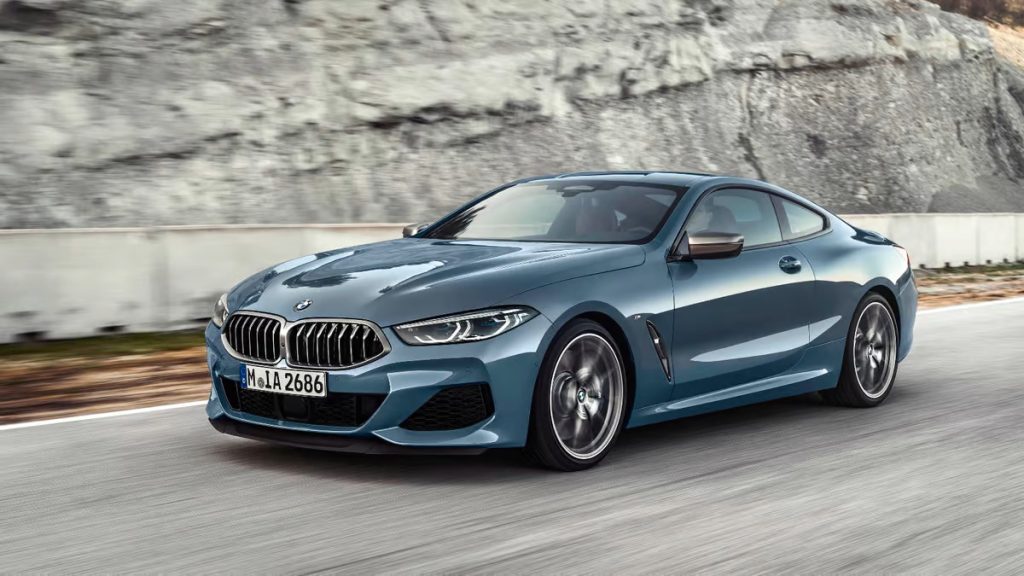
It’s designed as premium, high-speed transportation for two, competing with vehicles like the Mercedes-AMG SL-class and the Lexus LC.
The 8-series is available in both coupe and convertible variants and offers a choice of a powerful turbocharged inline-six or an optional twin-turbo V-8 engine. Inside, the design is sleek and sophisticated, featuring high-quality materials that align with its nearly six-figure price tag.
Whether you choose the coupe or the convertible, the 8-series delivers a sporty ride. In more aggressive driving modes, it provides ample driving excitement, though the high-performance M8 is the ideal option for those seeking all-out speed and thrilling back-road maneuvers.
Jeep Wrangler
“Two-door Jeep Wrangler. A combination of poor insulation, a short wheelbase, frozen mud tires, and overconfidence in many drivers makes them awful.”
This comment caught me off guard, but the Jeep Wrangler was one of the most popular suggestions today. Well, you learn something new every day!
Few cars in the USA are as instantly recognizable as the Jeep Wrangler, and the 2024 model of this SUV closely resembles its 20-year-old predecessor, blending into our roads as a comforting, familiar presence.
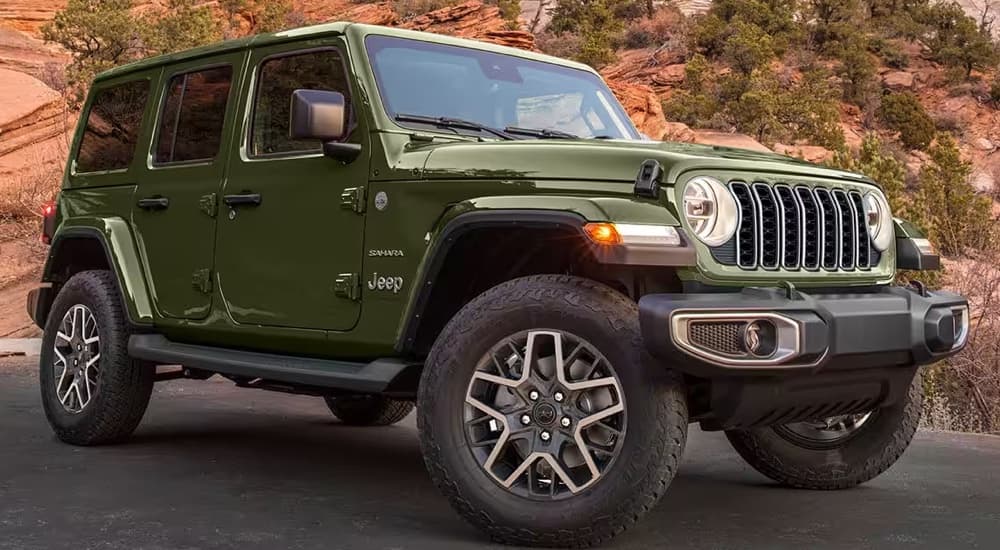
Much like the original VW Beetle, the Wrangler has remained faithful to its original formula—boasting an iconic design, unparalleled off-road capabilities, and solid axles.
Unlike competitors such as the Land Rover Defender, it hasn’t shifted toward luxury, sophistication, and high price tags.
While this simplicity makes it challenging to live with on a daily basis, leading to high noise levels, poor refinement, and sloppy handling, it still stands alone in its class for its unwavering focus on off-road performance, with the possible exception of the Ford Bronco.
Chrysler New Yorker
“Some experience tells me that a 1982 Chrysler New Yorker is terrible. That was the winter I was forced to learn how to drive a RWD piece of junk in winter.
It spun at the slightest loss of traction. It hated deep snow. It even had the audacity to get stuck in a three-foot snow drift. And all this was with snow tires.”
Imagine that! A car meant for city cruising getting stuck in a snow drift deep enough to cover its hood. Unbelievable.
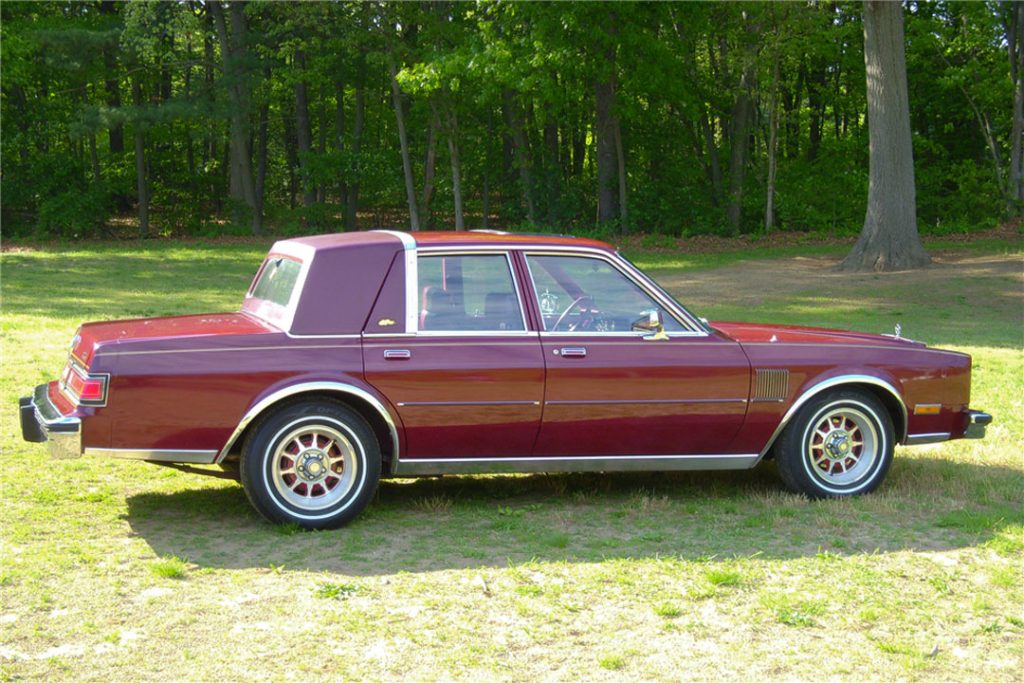
This 1959 Chrysler New Yorker drives as if it were strutting down a runway, commanding attention wherever it goes. It captures all eyes, whether it’s due to its elongated silhouette, the glossy black paint, the dazzling chrome accents, or perhaps all of these elements combined.
While many of its counterparts have succumbed to time, languishing in junkyards or barns, this 1959 Chrysler New Yorker proudly displays its two-tone body, adorned with enough aluminum trim to cover the entire Empire State Building.
With no dust, rust, bends, or dents, this 66-year-old New Yorker stands as a true survivor, likely one of the finest remaining examples of its kind, having aged like a fine wine. Only 2,435 units of the New Yorker were produced in 1959, making it an exceptionally rare find.
This ultra-sophisticated “supermodel” is powered by the RB Golden Lion V8 engine, which replaced the FirePower Hemi that year, when Chrysler repositioned the New Yorker into the luxury segment. The New Yorker of 1959 was credited with styling that mirrored the Imperial.
The 413-cubic-inch (6.8-liter) big-block engine generates 350 horsepower, with a three-speed TorqueFlite automatic transmission transferring the power to the rear wheels.
The exhaust produces the signature V8 rumble, while the torsion bar suspension ensures superior handling and agility.
Ford Ranger
“My dad had a RWD stick shift Ford Ranger pickup truck. It was so bad in the snow that we used to have to put logs in the bed of the truck to weigh it down.”
Another widely suggested vehicle was rear-wheel-drive trucks, especially by people who don’t know how to drive them. Definitely something to avoid when temperatures drop.
The 2025 Ranger is Ford’s midsize truck, positioned as a smaller and less capable option than the F-150. However, there are still several compelling reasons to consider it. For starters, it’s easier to drive and more affordable compared to its larger counterpart.
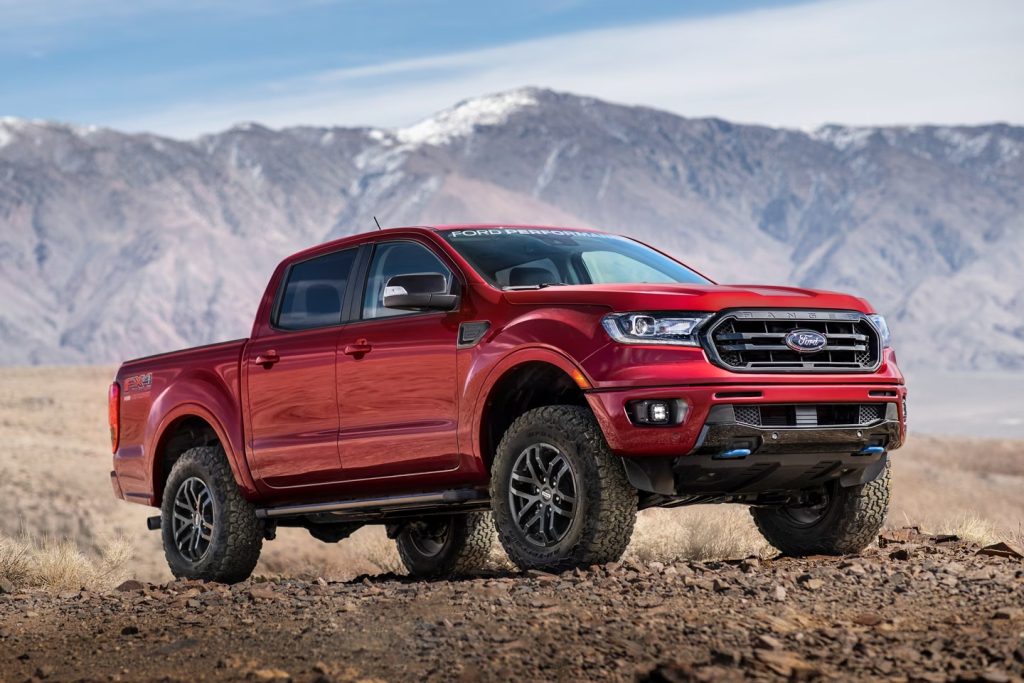
With a maximum towing capacity of 7,500 pounds, the Ranger is more than capable of hauling most trailers and boats that people commonly use.
Additionally, Ford gave the Ranger a complete redesign just last year, bringing a fresh new look both inside and out, a variety of available tech features, the option of a turbocharged V6 engine, and the introduction of the new Ranger Raptor model.
Chevrolet Chevette
Aside from the ones already mentioned, I’m going to nominate the Chevette and its RWD GM T-body derivatives.
These cars were light with very little weight over the rear wheels. On top of that, the HVAC was awful. I know this from first-hand experience. “What could be worse than a car with poor traction in the snow? A car with poor traction and a lousy heater.
Thirty-five years after it was ultimately discontinued, the Chevrolet Chevette continues to be synonymous with subpar motoring. Though the Chevette was both humble and far from impressive, it also holds a place in history as one of the most significant vehicles in General Motors’ legacy.
It marked a pivotal moment for GM, signifying the company’s first recognition that the world was changing in ways it hadn’t fully grasped yet.
Like many other automakers in Detroit, GM had traditionally avoided producing subcompact cars—viewing them as “Mini-cars, mini-profits,” as Henry Ford II famously put it. However, the energy crisis of 1973-74 forced a shift in priorities.
At the time, GM’s corporate average fuel economy was just 12 mpg, the worst in the industry. As large car sales quickly plummeted, GM’s market share fell to 42 percent, its lowest since World War II.
“We were in deep trouble,” GM chairman Pete Estes later reflected. “It was an emergency as far as we were concerned, and we decided we had to move fast, just like a war.”
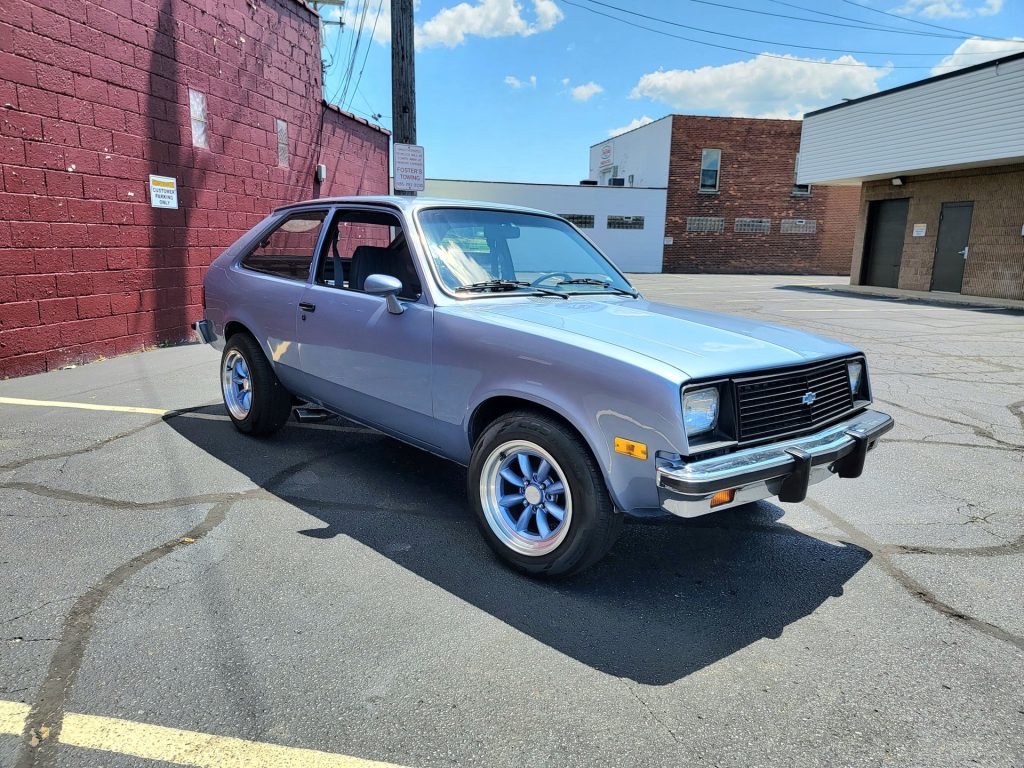
The problem was that none of the smaller cars GM had in development could be ready in time for the 1976 model year. In response, GM took unprecedented actions in its corporate history.
The first major departure from the norm was the decision to create a small, basic car. This was a groundbreaking move because, until then, GM simply did not make basic cars.
Alfred Sloan had built GM into the world’s largest and most powerful corporation by offering nicer alternatives to Henry Ford’s basic, utilitarian cars. The company’s previous attempts at smaller cars, the Corvair and Vega, were designed to position GM above imports, not to compete head-on with them.
The second monumental shift was GM’s decision to use a foreign design. While GM had already been importing cars from overseas—such as the Opel from Germany and the Chevrolet LUV pickup from Isuzu—these vehicles were intended for niche buyers.
The new small car, however, was to be a significant part of GM’s strategy, and the idea of sourcing such an important model from outside Detroit was unheard of.
GM turned to a project known as the T-car, which was nearing completion by Opel and GM do Brasil. The T-car was intended to be GM’s first “world car.”
Initially conceived at a 1970 meeting of GM’s overseas division in Detroit, the T-car was first launched in Brazil as the Chevrolet Chevette, and then expanded to markets worldwide, including Europe (Opel Kadett/Vauxhall Chevette), Argentina (Opel K180), Japan (Isuzu Gemini), South Korea (Saehan Gemini), and Australia (Holden Gemini), with each version tailored for the specific market.
As originally planned, the only region where the “world car” would not be introduced was GM’s home market in the United States.
Also Read: 6 Reliable City Cars and 6 That Aren’t Made for Stop-and-Go

